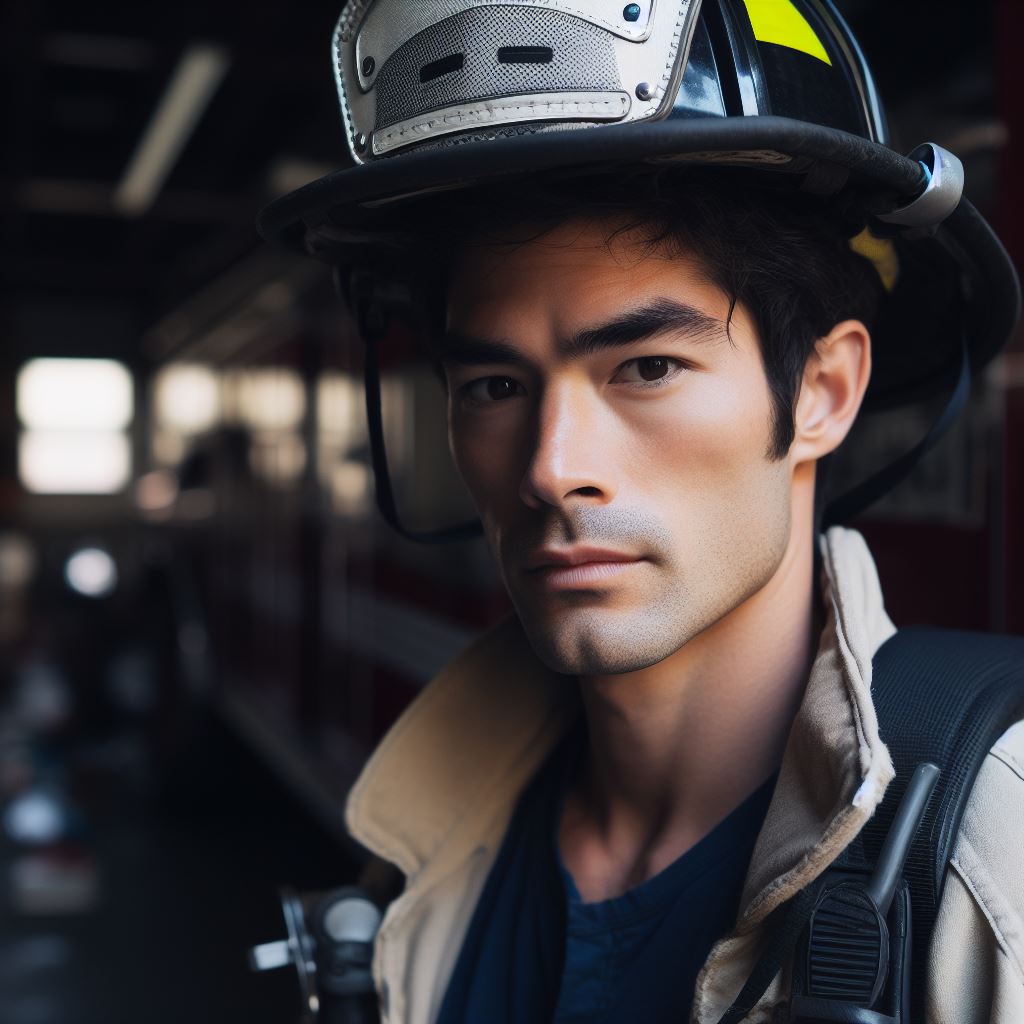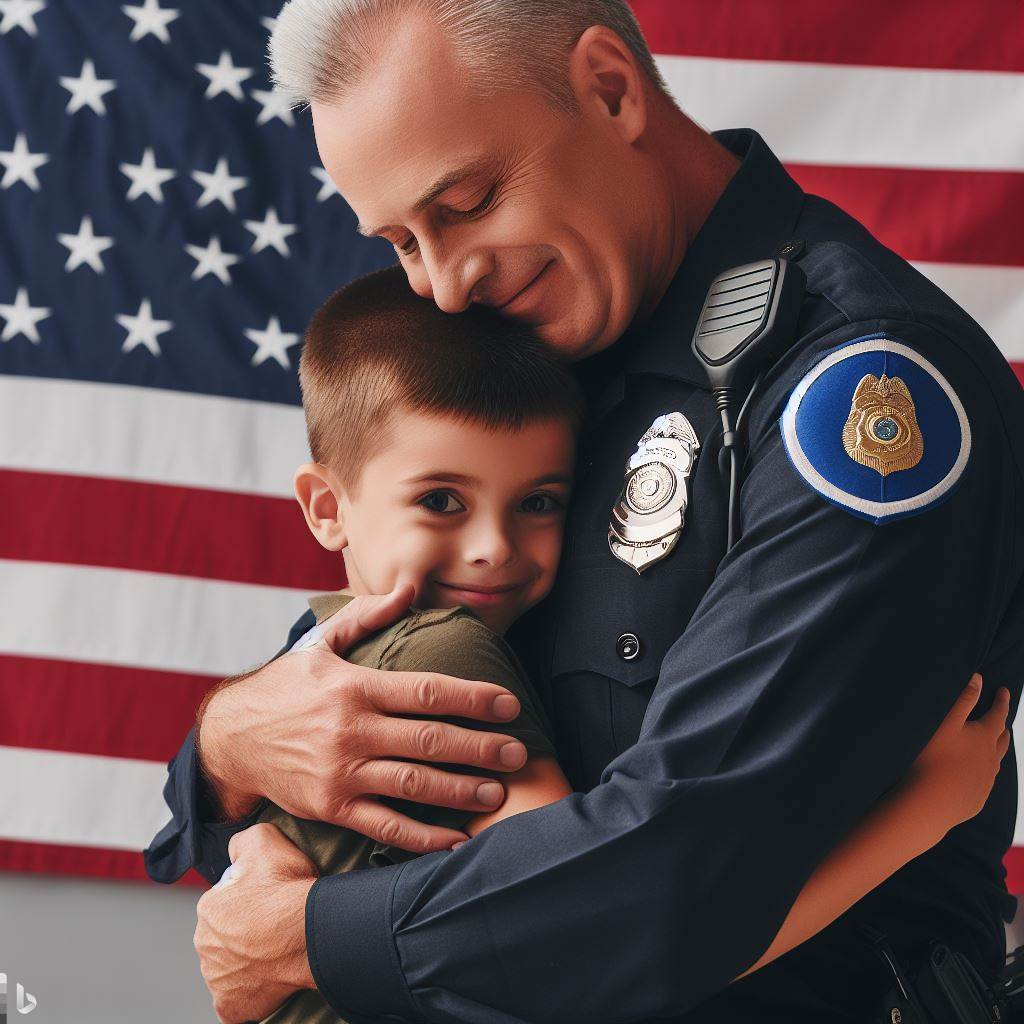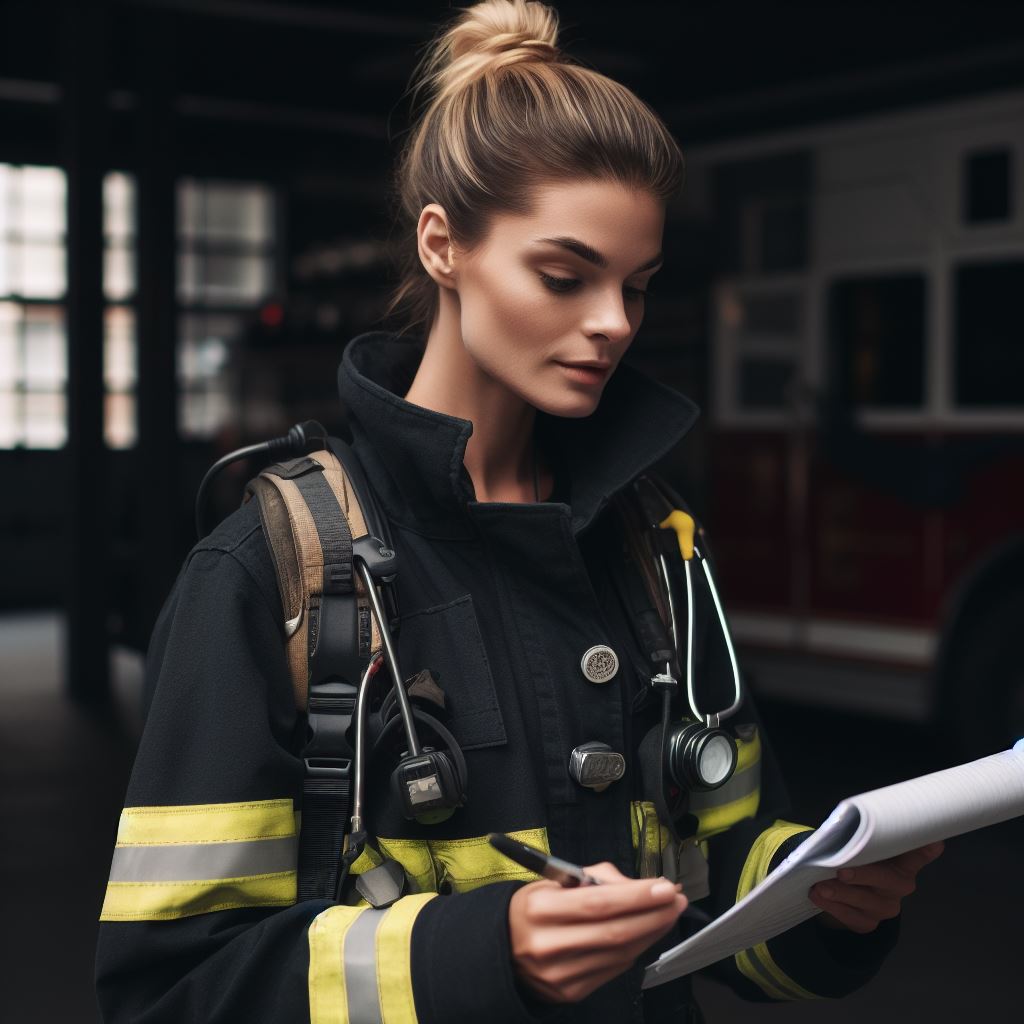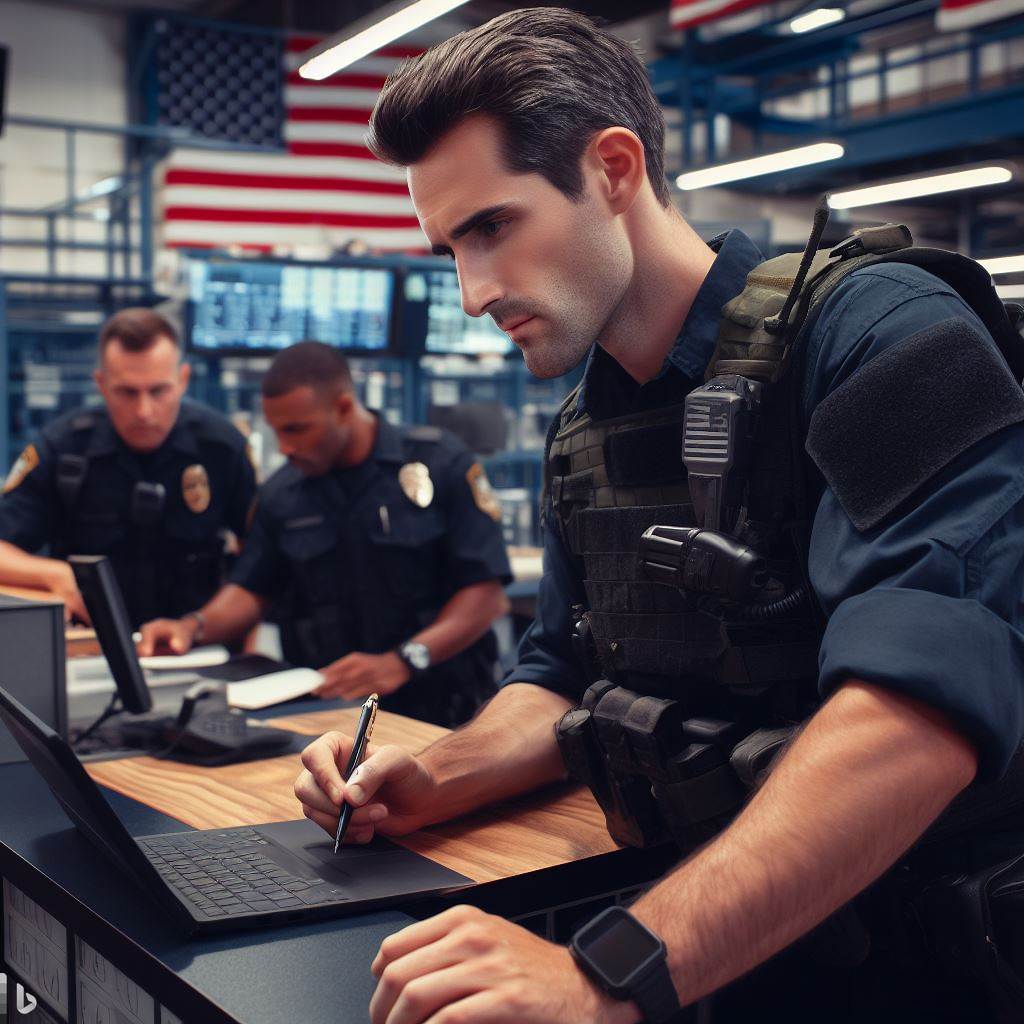Introduction
As we step into the intricate world of U.S. firefighting culture, it becomes evident that traditions and rituals form the very fabric that binds firefighters together.
This introductory section seeks to provide a glimpse into this rich culture, acknowledging the profound significance of these customs in fostering a robust camaraderie among firefighters.
The heartbeat of firefighting culture is intertwined with these rituals, serving as more than just ceremonial gestures.
They are the threads that connect individuals, uniting them in a shared sense of purpose and duty.
This blog is poised to explore the varied tapestry of rituals and traditions within U.S. firefighting, aiming to unravel their deeper meanings and unveil the strong communal spirit they cultivate.
Our mission is clear ‘ to navigate through the layers of tradition, understanding how each practice contributes to the unique identity of the firefighting community.
Join us on this enlightening journey as we unravel the intricacies and significance of rituals and traditions in U.S. firefighting culture, recognizing their role in fostering not just a bond, but a family among those who bravely protect and serve.
Origins and Significance of Firefighter Ceremonies
Historical context of firefighter ceremonies
- Firefighter ceremonies have a long history in the United States.
- These ceremonies can be traced back to the early days of organized firefighting.
- During the late 18th and early 19th centuries, volunteer fire companies began holding ceremonies to honor their fallen comrades.
- These ceremonies served as a way to pay respect and remember the sacrifices made by firefighters.
- They also helped foster a sense of camaraderie among firefighters and their communities.
The importance of ceremonies in honoring fallen firefighters
- Ceremonies play a crucial role in honoring fallen firefighters and their families.
- They provide a platform for expressing gratitude and recognizing the bravery of those who lost their lives in the line of duty.
- These solemn events serve as a reminder of the risks firefighters face every day.
- They also offer solace and support to the families who have lost their loved ones.
- Firefighter ceremonies ensure that the sacrifices made are never forgotten.
The role of ceremonies in instilling discipline and pride among firefighters
- Ceremonies serve as a way to instill discipline and foster a strong sense of pride among firefighters.
- By participating in these ceremonies, firefighters reaffirm their commitment to their profession.
- The rituals and traditions associated with firefighter ceremonies reinforce the values of courage, selflessness, and teamwork.
- They remind firefighters of the importance of their work and the impact they have on their communities.
- Through these ceremonies, firefighters are reminded of the honor and responsibility that comes with their role.
Basically, firefighter ceremonies have deep historical roots and hold immense significance in U.S. firefighting culture.
They provide a platform for honoring fallen firefighters, expressing gratitude, and supporting their families.
These ceremonies also play a crucial role in instilling discipline and pride among firefighters, reminding them of their commitment to their profession and the values they uphold.
Firehouse Traditions and Routines
Morning Roll Call: Significance and Purpose
- Morning roll call is a daily tradition where firefighters gather to receive updates and assignments.
- It serves as an opportunity to discuss important information and address any concerns.
- The purpose of roll call is to ensure everyone is informed and ready to face the day’s challenges.
- This routine promotes effective communication and enhances teamwork among the firefighters.
- It establishes a sense of unity and prepares the team for any emergencies they may encounter.
In the firefighting culture, traditions and routines play a vital role in fostering camaraderie, promoting effective communication, and enhancing teamwork.
Morning roll call is a daily tradition where firefighters gather to receive updates and assignments. This ritual serves as an opportunity to discuss important information and address any concerns.
The purpose of roll call is to ensure everyone is informed and ready to face the day’s challenges.
Mealtime Traditions: The importance of shared meals in fostering camaraderie
- Shared meals in the firehouse are more than just satisfying hunger; they build strong bonds.
- Firefighters gather around the table, sharing stories, laughter, and experiences.
- Mealtime traditions create a supportive and inclusive environment within the firehouse.
- These shared meals promote camaraderie, allowing firefighters to rely on and trust each other.
- Breaking bread together strengthens the sense of belonging and brotherhood/sisterhood among firefighters.
Shared meals in the firehouse hold significant importance beyond satisfying hunger. Firefighters gather around the table, sharing stories, laughter, and experiences.
These mealtime traditions create a supportive and inclusive environment within the firehouse. They promote camaraderie, allowing firefighters to rely on and trust each other.
Breaking bread together strengthens the sense of belonging and brotherhood/sisterhood among firefighters.
Shift Change Rituals: Bonding moments between outgoing and incoming firefighters
- Shift change rituals mark the transition between different groups of firefighters.
- During this time, outgoing firefighters pass on important information to the incoming crew.
- This ritual serves as a handover of responsibility and knowledge to ensure a smooth transition.
- Shift change rituals also provide an opportunity for outgoing and incoming firefighters to bond.
- These moments foster a sense of unity and cooperation between different shifts within the firehouse.
Shift change rituals mark the transition between different groups of firefighters. During this time, outgoing firefighters pass on important information to the incoming crew.
This ritual serves as a handover of responsibility and knowledge to ensure a smooth transition. Shift change rituals also provide an opportunity for outgoing and incoming firefighters to bond.
These moments foster a sense of unity and cooperation between different shifts within the firehouse.
Through these firehouse traditions and routines, firefighters develop strong relationships built on trust and support.
The morning roll call sets the tone for the day, ensuring everyone is on the same page and ready to face any challenges ahead.
Shared meals bring firefighters together, encouraging open communication and strengthening their bond.
Shift change rituals facilitate the smooth flow of information and create a sense of unity among different shifts.
Generally, firehouse traditions and routines are essential in U.S. firefighting culture.
They not only serve practical purposes but also foster camaraderie and build a sense of belonging within the firefighting community.
These rituals and traditions play a crucial role in maintaining the strength and effectiveness of firefighting teams by promoting effective communication, teamwork, and cooperation.
Read: Case Studies: Success Stories of US Detective Investigations
Symbolism in Firefighter Uniforms and Equipment
Elements of the firefighter uniform and their significance
- Helmet: The helmet is a symbol of protection and safety, representing the firefighter’s role in risk management.
- Coat: The coat is made of fire-resistant materials, symbolizing the firefighter’s bravery in facing danger.
- Pants: Fire-resistant pants ensure the firefighter’s lower body is protected from intense heat and flames.
- Boots: Firefighter boots are designed to withstand high temperatures and offer stability, representing their readiness to “stand their ground.”
- Gloves: Gloves not only protect the hands but also symbolize a firefighter’s dexterity and ability to handle different situations.
Symbolism behind the Maltese Cross, the emblem of firefighters
- A history dating back to the Crusades: The Maltese Cross was originally worn by the Knights of St. John, an ancient order of knights who fought fires during the Crusades.
- Symbol of bravery: The cross represents the bravery and heroism of firefighters, as they risk their lives to save others.
- Four arms representing four cardinal virtues: The arms of the cross symbolize courage, loyalty, selflessness, and honor.
- Remembrance of fallen firefighters: The Maltese Cross is a reminder of the sacrifices made by firefighters who have lost their lives in the line of duty.
Tools and equipment used by firefighters and their symbolic meaning
- Fire ax: The fire ax is a symbol of physical strength and represents a firefighter’s ability to break through obstacles and protect lives.
- Halligan bar: This tool, with its multiple functions, symbolizes adaptability and problem-solving skills, crucial qualities for firefighters.
- Hose: The hose is a symbol of control and power over fire, allowing firefighters to extinguish flames and save lives.
- Ladder: Ladders represent a firefighter’s ability to climb and conquer heights, enabling them to rescue people from elevated areas.
- Oxygen tank: This lifesaving equipment symbolizes the perseverance and determination of firefighters to overcome the dangers of smoke and lack of oxygen.
Ultimately, the symbolism in firefighter uniforms and equipment goes beyond their practical use. Each element and emblem represents the values, courage, and dedication of firefighters.
They serve as reminders of the sacrifices made by these brave individuals, who face danger to protect and serve their communities.
The symbolism in firefighting culture reinforces the unity and purpose of firefighters, creating a profound sense of identity and pride.
Read: The Thin Blue Line: Brotherhood & Sisterhood in Blue

Memorial Services and Firefighter Funerals
Purpose and significance of memorial services
- Memorial services in firefighting culture serve as a way to honor fallen firefighters.
- These services provide closure for the families and fellow firefighters grieving the loss.
- Memorials allow the firefighting community to pay respects and express gratitude for sacrifice and service.
- They reinforce the sense of brotherhood and unity within the firefighting culture.
- Memorial services also educate the public about the risks and sacrifices firefighters face.
Traditional elements of firefighter funerals
- Firefighter funerals typically have a ceremonial uniform presentation.
- A fire engine or ladder truck is often used as a hearse in the procession.
- The casket is draped with a flag, symbolizing the respect and honor bestowed upon the fallen firefighter.
- A symbolic “Last Alarm” bell is rung to commemorate the firefighter’s final call.
- Bagpipe music and drums are played, creating a somber and moving atmosphere.
Role of honor guards and bagpipes in firefighter memorial services
- Honor guards, consisting of fellow firefighters, provide a symbol of respect and reverence.
- They participate in the procession, displaying discipline and dignity.
- Bagpipes have deep historical ties to firefighting, dating back to Irish immigrant firefighters in New York City.
- Bagpipe music adds a cultural and emotional element to firefighter memorial services.
- It creates a solemn and powerful sound that touches the hearts of those in attendance.
Furthermore, memorial services and firefighter funerals play a vital role in the firefighting culture.
They serve to honor the fallen, provide closure, and strengthen the bonds within the firefighting community.
The traditional elements and the presence of honor guards and bagpipes enhance the significance and solemnity of these events.
Through memorial services, the firefighting culture educates the public about the sacrifices made by firefighters.
Overall, these rituals and traditions are deeply rooted in the history and values of the firefighting community, preserving the legacy of those who have served and protecting the spirit of camaraderie and dedication.
Read: Pay, Benefits, & Retirement: The Financial Side of Policing
Annual Firefighter Events and Celebrations
Firefighter Appreciation Day: Importance and Significance
Firefighter Appreciation Day is a special event dedicated to honoring and showing gratitude towards firefighters.
On this day, communities come together to recognize the bravery, selflessness, and dedication of firefighters who risk their lives.
Transform Your Career Today
Unlock a personalized career strategy that drives real results. Get tailored advice and a roadmap designed just for you.
Start NowIt is a time to express appreciation for the sacrifices made by these brave individuals in protecting lives and property.
Firefighter Appreciation Day serves as a reminder of the tremendous value firefighters bring to our communities.
It allows us to recognize their contribution and express our support and gratitude for their unwavering commitment.
Fire Prevention Week: Educating the community while honoring firefighters
Firefighters raise awareness about fire safety during Fire Prevention Week
During this week, firefighters engage in various educational activities to inform the public about fire prevention measures.
They conduct fire drills, visit schools to teach fire safety to children, and provide useful tips to prevent fires.
This week also serves as a tribute to firefighters who work tirelessly to protect their communities from fire hazards.
Firefighters educate the community to equip everyone with the knowledge to prevent fires and stay safe.
Competitions and Parades: Bringing firefighters together in a spirit of camaraderie
Competitions and parades are exciting occasions that bring firefighters from different departments together. These events promote camaraderie and foster a sense of unity among firefighters.
Competitions test the skills and physical abilities of firefighters, allowing them to showcase their expertise.
Parades provide an opportunity for firefighters to interact with the community and showcase their equipment and vehicles.
These events not only boost morale but also create strong bonds within the firefighting community.
By celebrating annual events, the United States strengthens the firefighting culture and recognizes firefighters’ hard work and sacrifices.
Read: Detective Associations in the USA: Networking and Support
Gain More Insights: Protective Services: Role of U.S. Marshals
Modern Changes in Firefighting Rituals
Impact of technology on firefighting traditions
- New technologies have revolutionized firefighting practices, replacing traditional methods with more efficient and effective techniques.
- Modern tools like thermal imaging cameras and drones have transformed search and rescue operations.
- Advancements in communication systems have enhanced coordination and response time during emergencies.
- Firefighters now rely on computerized systems to track equipment, manage resources, and analyze fire behavior.
Adaptation of rituals to meet changing needs and procedures
- Firefighters have modified their rituals to align with new safety protocols and advances in firefighting techniques.
- Training programs now focus more on technical skills and knowledge to keep up with evolving fire dynamics.
- Personal protective equipment has become an essential part of firefighting rituals to ensure safety.
- Rituals now place greater emphasis on physical fitness and mental resilience to cope with demanding tasks.
Preservation of core rituals and traditions despite modernization
- Even with technological advances, core elements of firefighting rituals are still strongly preserved.
- The traditional ringing of bells and use of firehouse flags continue to symbolize brotherhood and honor.
- Celebratory rituals like the wetting-down ceremony after a successful operation are still widely practiced.
- The firefighting community upholds the tradition of formal ceremonies to honor fallen comrades.
Conclusion
As we summarize our exploration of U.S. firefighting culture, the tapestry woven by rituals and traditions emerges as a cornerstone.
These cultural practices extend beyond mere ceremonies; they embody the essence of unity, pride, and resilience among firefighters.
Reflecting on the significance of rituals, we recognize how they serve as more than routine actions.
They become the binding threads that fortify a sense of camaraderie, instill pride in shared identity, and cultivate resilience in the face of challenges. In essence, these rituals are the heartbeat of the firefighting community.
As we bid farewell to this section, let’s not merely acknowledge but actively appreciate and honor these rituals.
Their endurance and continuity speak to a legacy that transcends generations, contributing to the unique and honorable character of U.S. firefighting.
In the end, consider it an invitation to embrace and perpetuate these traditions, fostering a culture that reveres its past while forging ahead with strength and unity.
[E-Books for Sale]
The Big Book of 500 High-Paying Jobs in America: Unlock Your Earning Potential
$19.99 • 500 High-Paying Jobs • 330 pages
Explore 500 high-paying jobs in America and learn how to boost your career, earn more, and achieve success!
See All 500 High-Paying Jobs of this E-Book
1001 Professions Without a Degree: High-Paying American Jobs You Can Start Now
$19.99 • 1001 Professions Without a Degree • 174 pages
Discover 1001 high-paying jobs without a degree! Unlock career tips, skills, and success strategies for just $19.99!




